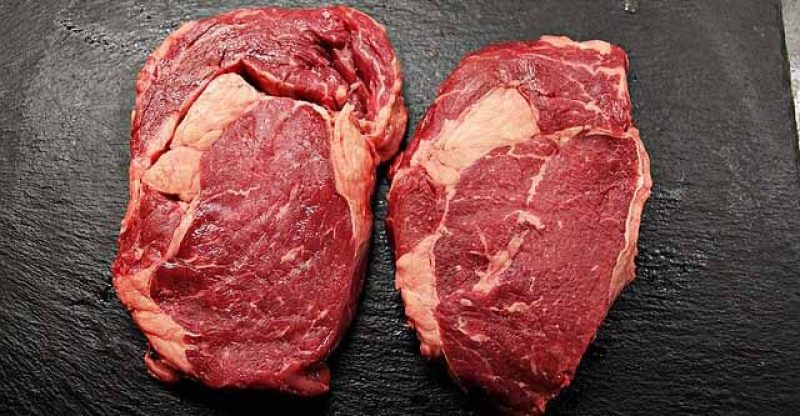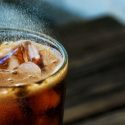What is Sodium Diacetate (E262ii) in Food and its Uses?

What is it | Production | Uses | Safety | Side effects | FAQs
Sodium diacetate, a 1:1 mixture of sodium acetate and acetic acid, is commonly used as a preservative, flavoring agent and pH adjustment in food. The European food additive number for it is E262(ii).
What is Sodium Diacetate?
Definition
Generally, it is sodium acetate with a slight flavor or taste of acetic acid. To be exact, it is the salt of acetic acid and can also be called “dry acetic acid” as composed of free acetic acid in a solid form (39 to 41%).
What is Sodium Diacetate Used for?
The main purpose of using it in food with its following 3 functions:
- a preservative to extend food shelf life in bread and meat.
- a flavoring agent to impart a vinegar taste in savory food.
- a solid source of free acetic acid to adjust the acidity of food.
What is Sodium Diacetate Made of?
This white, hygroscopic crystalline solid is made up of equal parts of sodium acetate and acetic acid on a molar basis. With free acetic acid content 39 to 41 % and sodium acetate 58 to 60 %. (1)
How is Sodium Diacetate Made?
In general, there are two manufacturing processes mentioned from authorities, from the FDA and EFSA, respectively.
According to FDA 21CFR184.1754, the synthesis of its technical grade is by reacting sodium carbonate with acetic acid or by reacting anhydrous sodium acetate with acetic acid for the production of special grade.
Based on the information from EFSA, the reaction is between sodium hydroxide and a calculated excess of glacial acetic acid to leave sufficient free acid after the production of sodium acetate. (2)
Specification
| Other names | Sodium hydrogen diacetate |
| CAS number | 126-96-5 |
| Chemical formula | NaH(C2H3O2)2 (anhydrous) Or C4H7NaO4·nH2O (n = 0 or 3) |
| Molecular weight | 142.09 (anhydrous) |
| Solubility | Freely soluble in water. It dissociates to acetate, sodium and hydrogen ions. |
| PH | The PH value of a 1 in 10 solution is between 4.5 and 5.0. |
| PKa | 4.75 (Control of Foodborne Microorganisms, edited by Vijay K. Juneja, John N. Sofos, 2001) |
What are the Uses of Sodium Diacetate?
It can be used in food, feed, cosmetics and pharmaceutical generally for its antimicrobial effect, vinegar taste, and PH regulation.
Food
Generally, the application of its food grade covers bakery, meat, and savory products. Plus, the solid form makes it easy and safe to use and without the need to transport like liquid acetic acid.
Bread
As a preservative, it is used as a mold inhibitor in bread dough to prolong the shelf life. Meanwhile, it shows a synergistic antimicrobial effect with calcium propionate.
Meat
Low levels of sodium diacetate (i.e., below 0.2%) can lower the pH of the surface of meat products (such as in pork and beef) and therefore inhibit the growth of molds and bacteria, including some major foodborne pathogens, Listeria monocytogens.
It is not only due to its pH lowering effect, but to the activity of the acetate ion on listerial growth.
The combination of sodium lactate or potassium lactate with sodium diacetate is more effective in retarding microbial growth. (3)
Savory products
As with a high concentration (39-41%) of acetic acid, it is considered a dry vinegar and used as a flavoring agent. It can be added to savory products, such as in savory cookies, chips, condiments, sauces, soups, potato crisp and salads.
Acidity adjustment
It functions as a buffering agent to adjust the acidity of the food. It can be easily applied, either in dry or liquid form.
Feed additive
Sodium diacetate can be used as a preservative in feed for poultry, pigs and pet animals.
Cosmetics
Per “European Commission database for information on cosmetic substances and ingredients”, it can function as a buffering and masking agents in cosmetic and personal care products. (4)
Pharmaceutical
Sodium diacetate plays an important role in regulating the pH level of the dialysis solution. It also benefits clinics in storing, only to dissolve the dry mix, instead of having to store a liquid product. (5)
Is Sodium Diacetate Safe to Eat?
Yes, its safety when used as a food additive has been approved by the U.S. Food and Drug Administration (FDA), European Food Safety Authority (EFSA), Joint FAO/WHO Expert Committee on Food Additives (JECFA), as well as other authorities.
FDA
It is GENERALLY RECOGNIZED AS SAFE (GRAS) and can be used as an antimicrobial agent, flavoring agent and adjuvant, and pH control agent in food at levels not to exceed current good manufacturing practice.
The following are the approved food list and with the max usage (6):
- Baked goods: 0.4%
- Gravies and sauces: 0.25%
- Fats and oils: 0.1%
- Meat products: 0.1%
- Soft candy: 0.1%
- Snack foods, soups and soup mixes: 0.05%
EFSA
Sodium diacetate (E262(ii)) is authorised as a food additive in the European Union (EU) in accordance with Annex II and Annex III to Regulation (EC) No 1333/2008 on food additives and categorized as “additives other than colours and sweeteners” (7)
Uses
Its approved applications are listed separately with E262(ii) or in Group I where the uses is quantum satis (QS).
Following foods may contain it (8):
- Canned or bottled fruit and vegetables
- Bread
- Pain courant français; Friss búzakenyér, fehér és félbarna kenyerek
- Processed cereal-based foods and baby foods (a pH adjustment)
UK Food Standards Agency
Categorized in Others. (9)
Food Standards Australia New Zealand
It is an approved ingredient in Australia and New Zealand with the code number 262. (10)
JECFA
Function Class: food additives, preservative, sequestrant. (11)
Acceptable daily intake (ADI): “0-15 mg/kg bw” set since 1973. (12)
What are the Possible Health Risks?
It is common that sometimes consumers have questions whether sodium diacetate is bad for our health and what are the side effects. We understand that consumers have concerns about the synthetic preservative in the foods we eat. However, there are few reports concerns the risk of sodium diacetate. Maybe someone will be allergic to it.
Frequently asked questions
Is it Natural?
No, it is a synthetic product as we can learn above, that it comes from chemical reaction.
Is it Halal?
Yes, it is generally recognised as halal. And we can find several suppliers certificated with MUI halal.
Is it Kosher?
Yes, it is kosher pareve. It has met all the “kashruth” requirements and can be certified as kosher.
Is it Gluten free?
Yes, it is gluten free according to FDA that it does not contain wheat, rye, barley, or crossbreeds of these grains. (13)
Is it Vegan?
Yes, it is vegan. Raw materials and the manufacturing process without the use of animal-based products.
Does Sodium Diacetate Contain Milk?
No, it is not a milk-derived product.
What is the Difference between Sodium Acetate and Sodium Diacetate?
They’re not same. Sodium acetate is a pure product while the latter consists of sodium acetate and acetic acid.
What is the Substitute of Sodium Diacetate?
Potassium diacetate is an alternative for sodium diacetate E 262 (ii). The replacement can reduce the dietary sodium intake.
Conclusion
Now you may have a knowledge of the preservative and flavoring agent – Sodium diacetate (E262ii), from the following aspects:
- Composition
- Two manufacturing processes
- Uses in food
- Safety
- Side effects
- FAQs
What do you think of this ingredient? Let me know in the comments.



Thank you !! Very helpful!
Soy is in SO many additives or used in the production process. I get a mouth rash and worse, from the products that do have even miniscule components of it, yet it’s very hard to find information about these ingredients and processes in creating products.
That search is what brought me here… in this case I just have to guess from the information from my body’s reaction, that soy is in the production process for 262, or something about it is so similar that my body interprets and reacts to it it the same as something containing traces of soy.
“Diacetate”… is there soy in the source materials?
Often the word acetate is a clue that soy fibre is involved… soy is a major allergen that manufacturers like to imagine can be so highly processed that it won’t cause allergies, but it is found in so so many additives and products, that it actually incrementally accrues in the system.
I believe that many people are sensitive or even allergic, but have no idea what the cause is… as someone who listens and responds to my body, it still took me 19 years and a naturopaths help to even start to get on the right track.